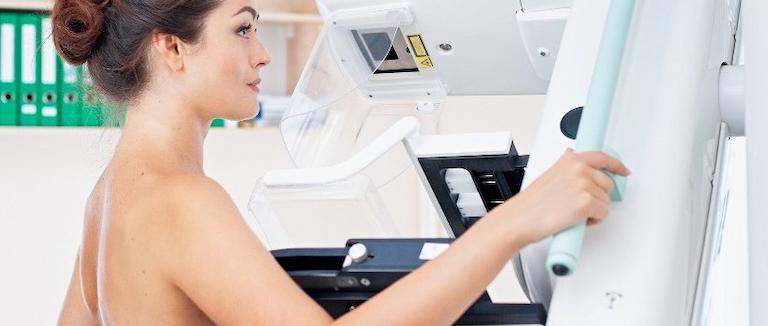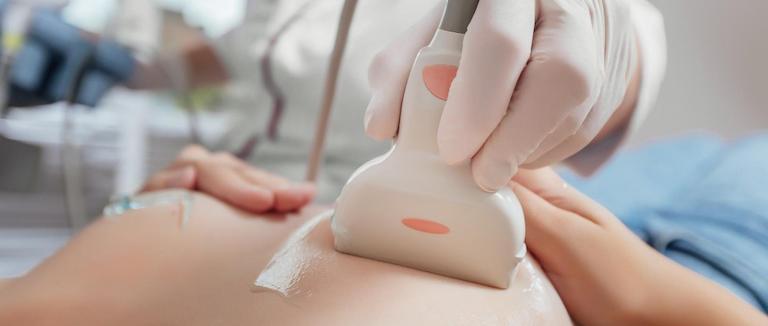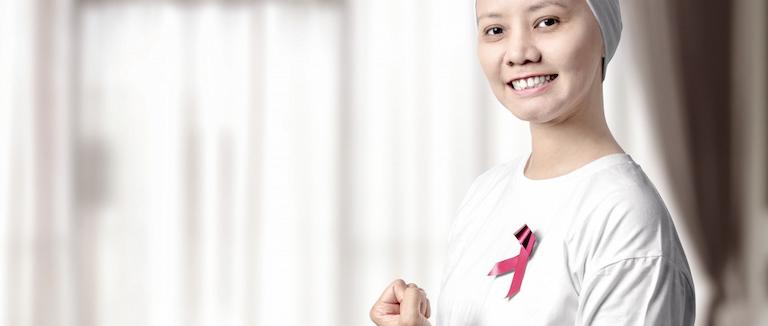Breast check-up is a general term covering breast cancer screening, mammography, and other methods used to detect signs or symptoms of cancer before they advance. Through regular breast check-up screenings, breast cancer can often be identified at an early stage, when it is easiest to treat and outcomes are most favorable.
The primary purpose of a breast check-up is to detect cancer at its earliest and most treatable stage, before it poses a serious threat. Early detection not only saves lives but also helps preserve healthy organs. In some cases, even if cancer has advanced, timely breast check-up screening can allow for successful treatment with less extensive therapies.

Breast Cancer Check-up Methods
Breast screening involves several methods, including breast check-up examination, mammography, magnetic resonance imaging (MRI), and breast ultrasound. Each of these tools plays a unique role in the early detection and diagnosis of breast cancer.
What is Breast Examination?
A breast check-up examination involves a physical assessment of the breast, either by yourself at home or by a healthcare professional in a clinic. If you notice any changes, unusual lumps, or abnormalities, it is important to inform your doctor promptly.
While breast check-up exams are valuable, they are not enough on their own to diagnose cancer. If a breast check-up raises concerns, your doctor may recommend additional imaging tests, such as mammography, ultrasound, or a biopsy for further evaluation. Regular breast check-up examinations play a crucial role in early detection and can be lifesaving.
What is Mammography?
Mammography is an imaging method where low-dose X-rays are used to take an X-ray image of the breast. The breast is placed between two plates, and X-rays are taken from various angles to provide a detailed analysis of the breasts. Annual mammographic breast check-up screenings for women over 40 have been shown to significantly reduce the number of deaths from breast cancer. High-resolution digital mammography can be performed in modern screening centers, and a technique called tomosynthesis, also known as 3D mammography, is also available.
When it comes to early diagnosis, mammography is considered a successful method. It has high sensitivity and is included in many hospitals' annual breast check-up programs. Moreover, advancements in technology have reduced the level of radiation exposure during mammography. However, this exposure is not zero. Therefore, it may not be an ideal method for pregnant women and individuals sensitive to radiation. Additionally, mammography requires compression of the breast between two planes, which can be uncomfortable for some individuals. Difficulty in imaging dense tissues can also be encountered.
What is Breast Ultrasound?

Ultrasound machines create images based on the passage of sound waves through breast tissue. A probe is placed on the breast skin, and high-frequency sound waves are sent into the breast tissue; these waves either reflect back or echo to the probe. The device converts these changes into an image. Therefore, breast ultrasound is a very good method for evaluating abnormalities detected during breast check-up or screening.
Breast ultrasound is a radiation-free examination method. It can visualize tissues in detail and detect small masses. One of the greatest advantages of ultrasound is its ability to provide dynamic examination. It visualizes tissues in a live and moving manner, allowing for monitoring. This makes it a very useful method for examining tissue changes. However, breast ultrasound is limited in imaging deep tissues. Similarly, it has limited capability in examining tissues with high density. Therefore, ultrasound examination may be more challenging in individuals with dense breast tissue.
Breast Magnetic Resonance Imaging (MRI)
Breast magnetic resonance imaging involves creating images on a computer based on the passage of radio waves through tissues. Contrast agents are used in breast MRI imaging. In some cases, such as pregnancy and allergies, contrast agents cannot be administered, so breast MRI cannot be performed on these individuals. Breast MRI is primarily used in individuals at high risk for breast cancer. It is generally not recommended for women at average risk for breast cancer.
One of the main advantages of breast MRI is that it is also a radiation-free method, making it safe in terms of potential adverse effects from radiation. It also provides a more sensitive and detailed imaging capability. However, as a result, the risk of reaching a false positive result is higher.
5 Key Benefits of a Regular Breast Check-up
The greatest benefit of regular breast check-up is the ability to detect potential breast cancer at an early stage. As with all cancers, early diagnosis is critical in breast cancer. Assessing the advantages of early tumor detection through regular breast check-up is important from several perspectives.

1. Higher Treatment Success Rates
The chances of successfully treating cancer are much higher when it is diagnosed early. The risk of cancer spreading is reduced, and it can often be managed with less invasive methods, avoiding the danger of it becoming life-threatening.
2. Less Aggressive Treatment
In early-stage cancers, significantly higher success rates can be achieved with less aggressive treatments than those required in later stages. Cancer treatment can be challenging and exhausting, and while medications and other therapies help eliminate cancer, they may also cause difficult side effects. With early diagnosis through a breast check-up, however, less invasive, shorter-term, and highly effective treatments are possible, making the process far less taxing for patients. Those who recover with fewer side effects and less physical or emotional strain can return to their normal lives much more comfortably.
3. Lower Financial Costs
Prolonged treatment duration and the number of therapies required can not only place a physical strain on patients, but also increase financial burdens. Early detection through breast check-up helps reduce these economic pressures, as treatment can begin sooner and is often less extensive.
4. Preventing Breast Loss
Since the growth and spread of cancer are limited in early stages, saving the breast will be much easier. While in delayed cases, the breast may need to be removed, this risk is much lower with early diagnosis and treatment.
5. Greater Peace of Mind
Regular breast check-up routines offer psychological comfort. Knowing that you are taking proactive steps for your health provides emotional relief and confidence, helping you stay in control of your wellbeing.
To benefit from all these advantages provided by early diagnosis, all you need to do is regularly perform breast check-up self-examinations and not miss your scheduled breast check-up appointments. Remember, defeating breast cancer, one of the leading causes of death worldwide, is not difficult at all with regular breast check-up and early diagnosis.
* Liv Hospital Editorial Board has contributed to the publication of this content .
* Contents of this page is for informational purposes only. Please consult your doctor for diagnosis and treatment. The content of this page does not include information on medicinal health care at Liv Hospital .
Visit Liv Hospitals.
What is a comfortable breast check-up
A comfortable breast check-up refers to a gentle and patient-centered breast examination that uses modern imaging technologies to detect any abnormalities early without causing discomfort.
Why is comfort important during a breast check-up
Comfort reduces patient anxiety, encourages regular screening, and helps ensure accurate results by allowing relaxation and proper imaging positioning.
How often should I have a breast check-up
Women over 40 are usually advised to have an annual breast check-up. Those with family history or higher risk factors may need earlier or more frequent screenings.
What tests are included in a comfortable breast check-up
It may include a clinical breast exam, ultrasound, mammography, and if necessary, MRI imagingall performed with patient comfort and privacy in mind.
Can a breast check-up detect cancer early
Yes, regular check-ups can identify breast cancer at an early stage when treatment is more effective and recovery chances are higher.
Is a breast check-up painful
Modern mammography and ultrasound systems are designed to minimize pressure and discomfort, making the procedure more comfortable than traditional methods.
At what age should women start breast check-ups
Women should begin routine breast screenings between ages 35 and 40, or earlier if they have a family history of breast cancer.
How should I prepare for my breast check-up
Avoid applying deodorant or lotion on the chest area before the exam and wear comfortable clothing to make the process easier.
Can men also have breast check-ups
Yes, although rare, men can develop breast cancer. A check-up is recommended if any lumps, swelling, or nipple discharge are noticed.
Why choose Liv Hospital for a breast check-up
Liv Hospital provides advanced imaging technology, experienced specialists, and a supportive environment focused on safety, accuracy, and patient comfort.
